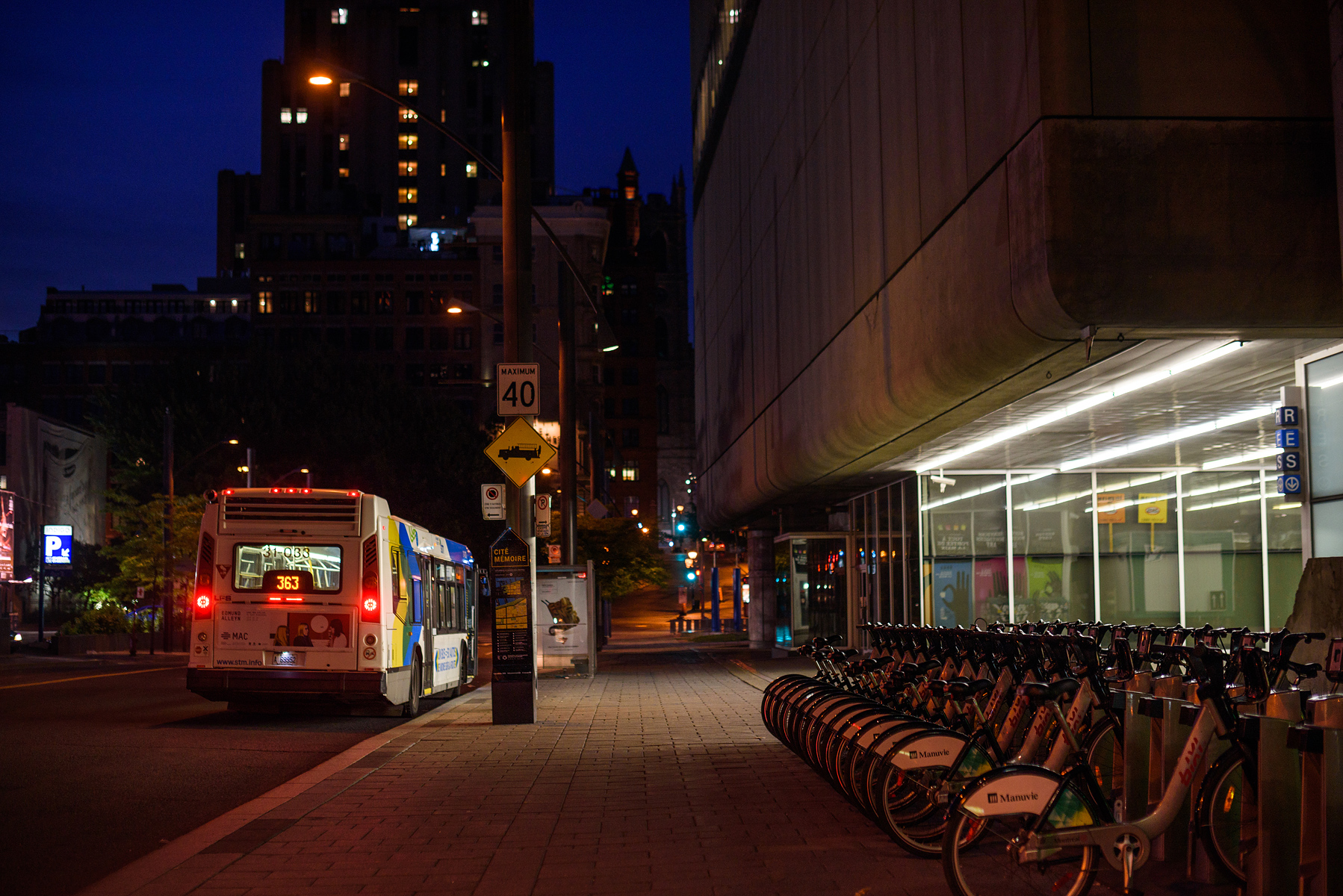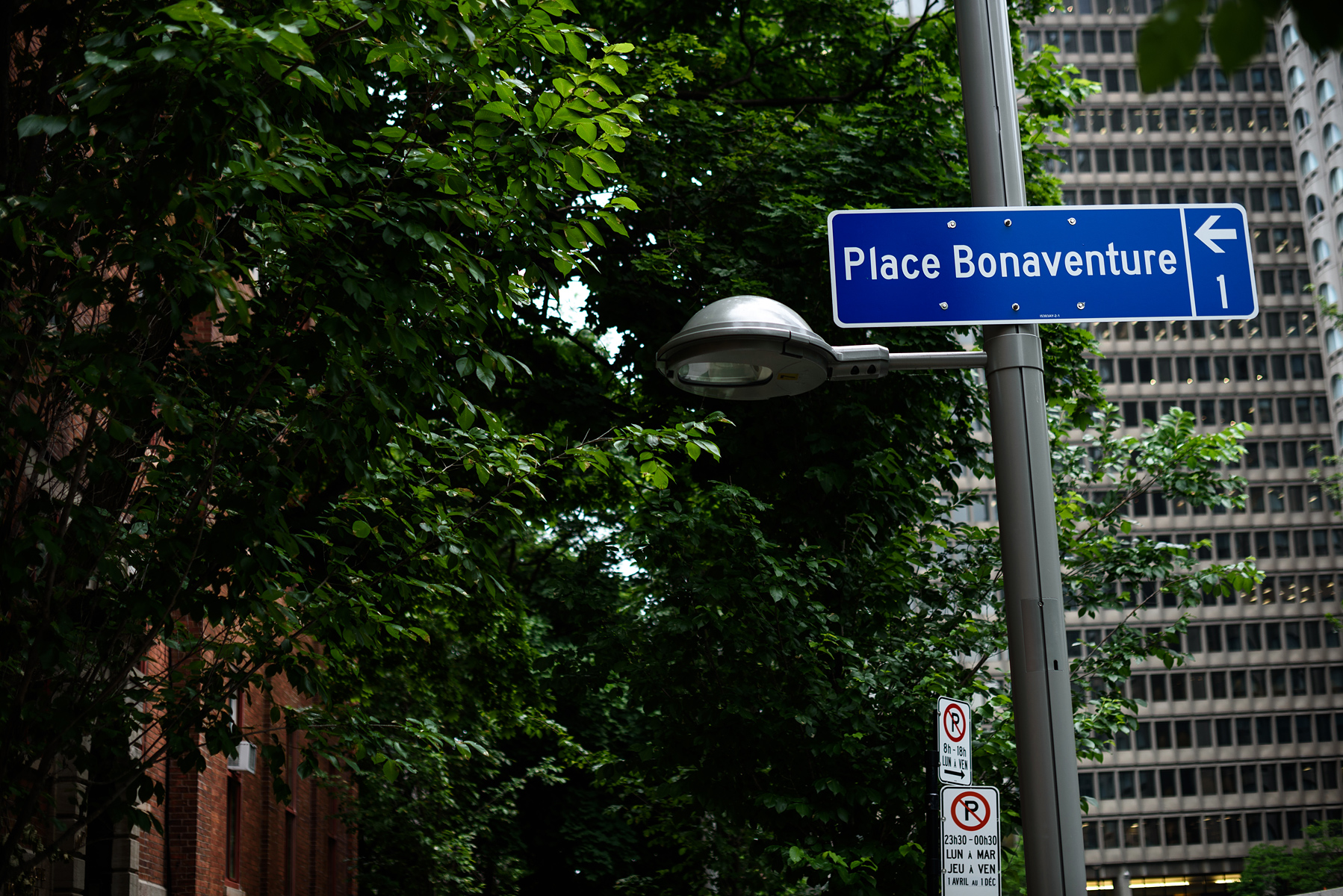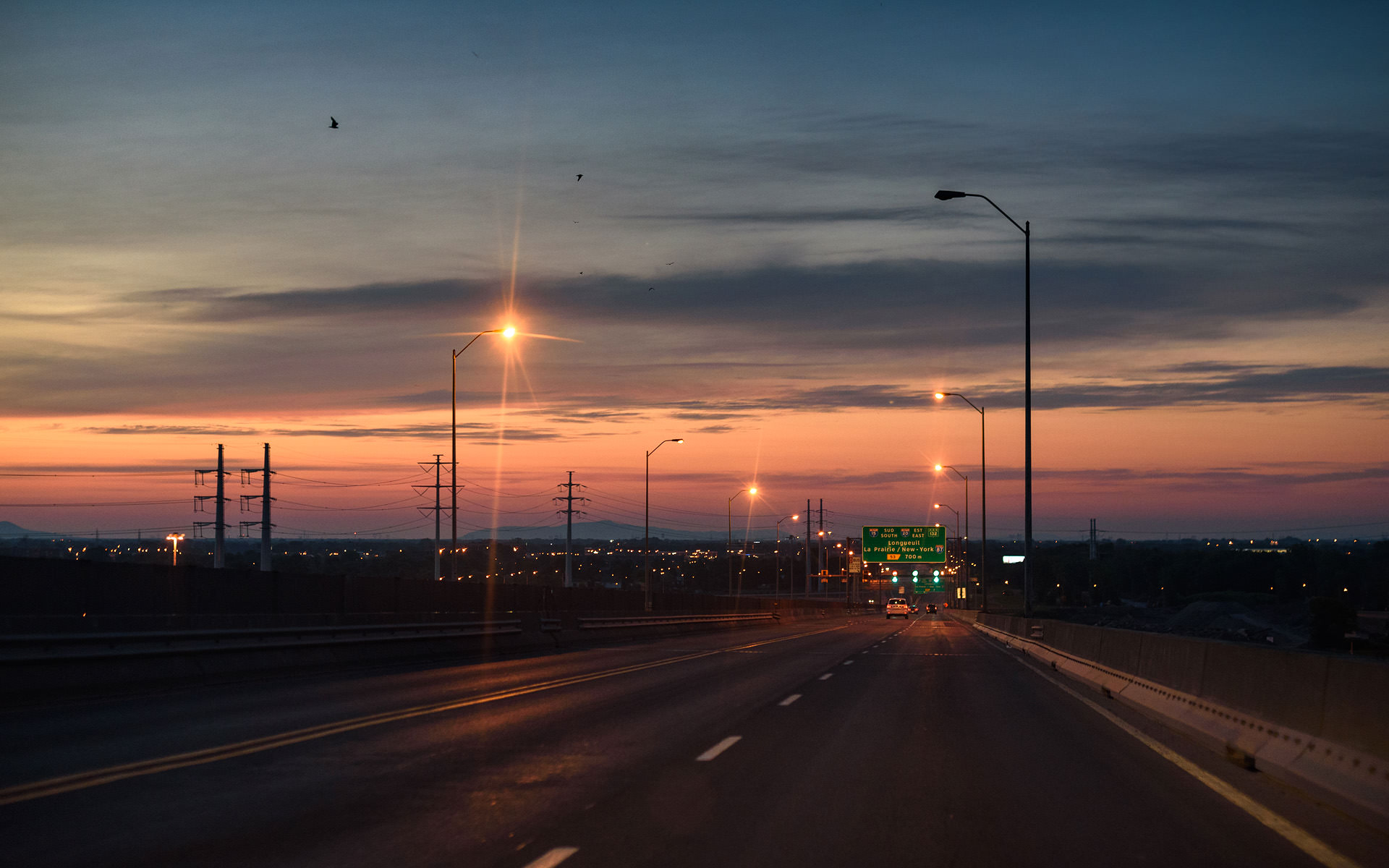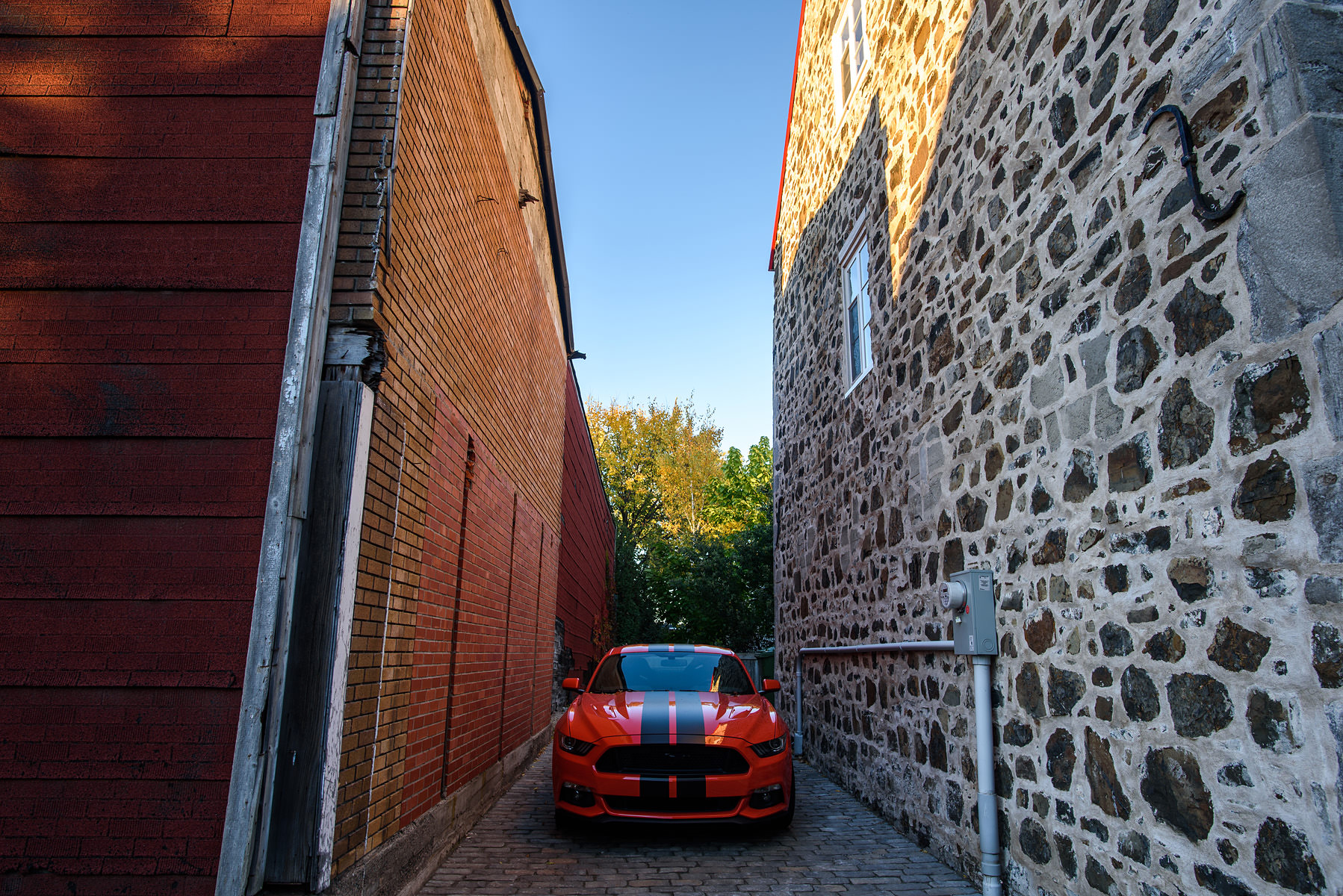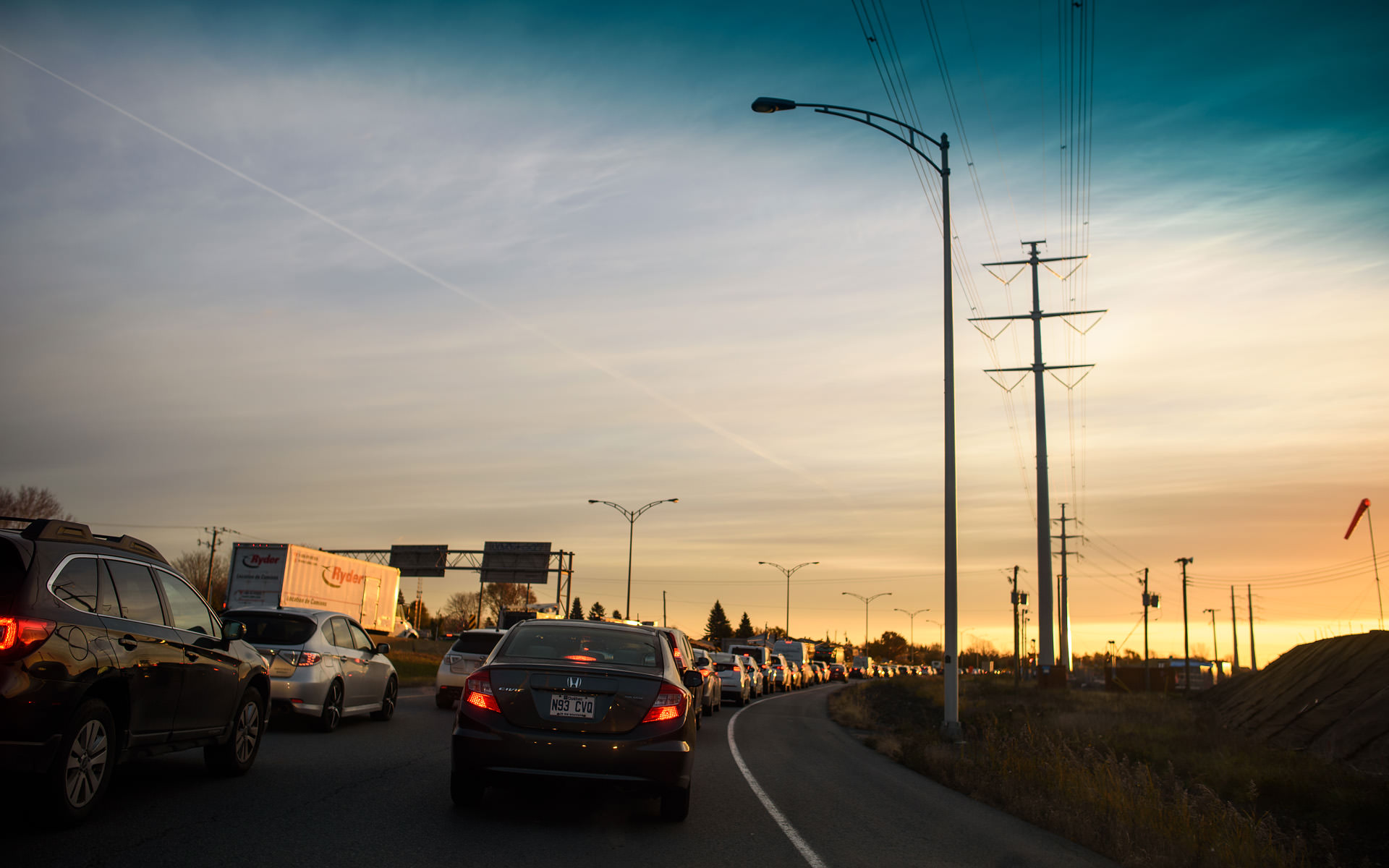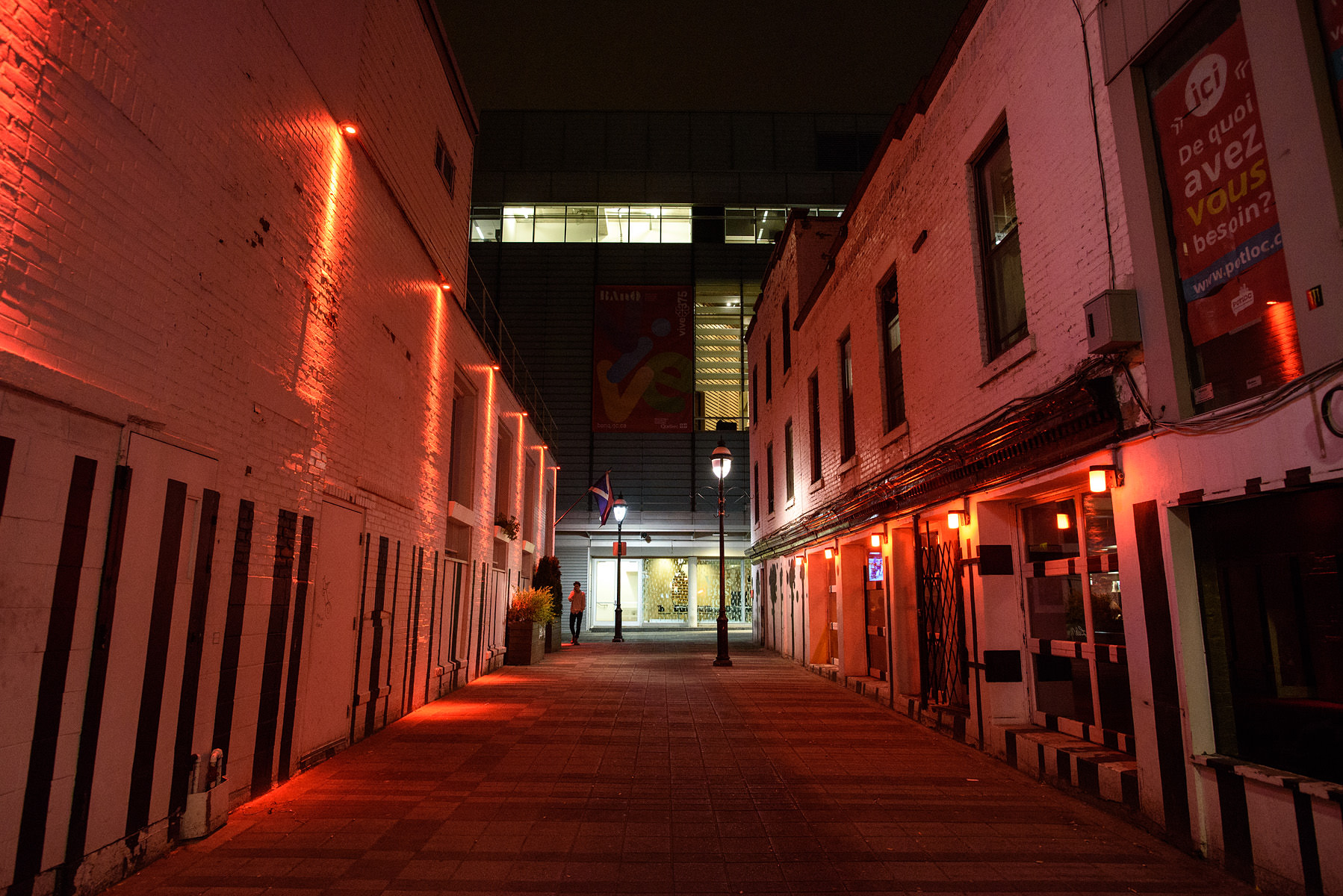Nikkor G lenses, overcorrected for the night
G-Unit
First off, let me apologize for completely dismissing the G prime lenses. While their microcontrast, color transmission and depth rendition abilities are inferior than older lenses in most shooting scenarios, there is an area where the G lenses pull waaaaay ahead: the night.
The realities of a high depth rendition prime lens.
While the AF-D prime lenses display the high levels of depth rendition, saturation and micro-contrast of their Ai-S lens ancestors, they also carry their benefits in daylight and weaknesses in night time shooting situations. During the day, there is mostly a single dominant key light: the overcast sky or the sun. As daylight disappears, multiple lights add up on the subject. This creates a lot of bloom and heavy chromatic abberations. To correct for that, I need to drastically close the aperture down. Unless I can cast a dominant light on my subject, available light will render the AF-D lens useless in night time for high aperture handheld photography. Ex: If the 85 1.8D works very well at f1.8 (f2.2 fully corrected) during the day, it will require a close down to f2.8 (f4 fully corrected) to be satisfying for me during evening.
AF-D Nikkor 85mm 1.8D closed down to f4 at the Francofolies festival
AF-D Nikkor 85mm 1.8D at f1.8 with a single dominant light (a flash) from the left
Correction by element addition
One of them is better in daylight, the other is better in low-light.
In lens design, 1 solution creates multiple optical problems, it is up to the lens designer’ to decide which problems to correct or solve. Those are TRADE OFFs. Most G prime lenses add 1 to 3 elements compared to their AF-D equivalents to correct for chromatic aberrations, therefore improving image resolution as part of lens evolution towards modernity. While I did find the results of such lenses to be very flat and unnatural during daylight shooting at first, I didn’t understand how to appreciate such design decisions until I re-borrowed them (the Nikkor 50mm 1.4G and the 85mm 1.8G) back for night shooting. Suddenly their sterile rendition of daylight (single key light situation) brought depth and life to the subjects of the evening (multiple lights situation) almost as if the overcorrection was purposely done as so.
Here are some images with the 50mm 1.4G shot at night. Notice how well it renders each scene.
Here are some images with the 50mm 1.4G shot during daylight. Notice how flatter it becomes, how distorted it is and how weird its corner vignette rushes into darkness.
Modern wide lens revolution: superb resolution and depth compromise.
Nikkor AF-S 20mm 1.8g ED at the National Library of Quebec
By shooting more with modern lenses, I noticed that many of the wide angle focal length improved radically over their older versions. The 20mm 1.8g was a big revelation as was the 28mm 1.8G. What was really achieved was a successful compromise between stretching the resolution further into the corner without crippling depth rendition and micro-contrast that much, a true design miracle. Here are some comments on those wides for my D750.
20mm 1.8G ED: Absolute must have. Resolution is well spread across the frame yet manages to render depth and tonality to a pleasing level while maintaining gorgeous bokeh and close-up abilities. Simply brilliant.
28mm 1.8G: Nikon’s new tonal monster on wide angles. Satisfyingly sharp and contrasty, gorgeous colors, smooth bokeh, excellent depth rendition, the lens can really do it all at the price of a little distorsion. It’s the 35mm f2d’s lowlight cousin.
Nikkor AF-S 28mm 1.8G documenting Pokemon Go craze
24mm 1.8G ED: The black sheep of the wide triplet. Resolution isn’t as successfully spread across the frame as the 20mm, nor the tonal transmission is as rich as the 28mm 1.8g for micro-contrast and depth rendition. It does however improve over the 24mm 2.8D when closed down to f2.8 on resolution and corner behavior at the price of color transmission. It’s a great lens but less relevant when you have the 20 and the 28. You buy it as the night alternative to the 24mm 2.8D if you really love 24mm else, the 20mm is a much better lens for FX.
Nikkor AF-S 24mm 1.8G ED at Camelia Sinensis candle night
Continuing notes on great modern nikkor lenses on FX
Nikkor AF-S 50mm 1.4G
Aside from wide angle lenses, other focal lengths come with bigger compromises as they are specific for lowlight and perform worse than their AF-D brothers. Most of them have color transmission issues since they use more glass elements to correct for incoming light. In lowlight however, the sheer contrast of the light is rich enough for those primes to render depth and color to a pleasing level.
85mm 1.8G: Crazy sharp prime lens, nearly perfect in correction for low-light shooting, but very sterile and boring daytime rendering.
Nikkor AF-S 85mm 1.8g. Rest in peace Sharon Jones...
The ones to avoid so far
Nikkor AF-S 35mm 1.8G ED FX at Ramen-Ya. Horrible bokeh, depressingly flat and desaturated.
These G primes have compromises that are way too big that they actually degrade image quality rather than improve anything over that of a zoom lens.
35mm 1.8G ED FX: This lens was clearly designed to compete against the resolution flat-king Sigma 35mm 1.4 ART. While its bokeh is absolutely horrible, it is easy to notice its lack of depth, contrast and saturation. Avoid, just get the 28mm 1.8g or the 35mm f2D
58mm 1.4G: Mythical over-hyped lens that I bought and used for over a year before selling. The lens’ fate is locked into providing a semi-dreamy sharp-ish semi-corrected f1.4 performance that only favors a single human and living object over a specific shooting distance while being terribly clumsy flat as soon as the aperture closes down. It also has very bad minimum focus distance. Best replaced by the Voigtlander 58mm 1.4 or the 50mm 1.8G.
Nikkor AF-S 58mm 1.4G when it can't blur anything. Flat piece of hype.
Micro 105mm 2.8G VR: Absolute failure of a lens. Quite heavy. VR element is constantly wobbly. Has way too many glass elements and even the old Nikkor 105mm 2.8D out renders it. Avoid. Get the 105mm 2.8D or the Tokina 100mm 2.8.
Micro-Nikkor 105mm 2.8G VR... flat oh god so flat X_X
Solution: making a “noct” bag
Noct is a term often used to define a lens built for night shooting. I used to believe in the timelessness of a piece of gear, and in some cases, there are lenses that can’t be replaced by a better version. In others, it’s simply more practical shooting with more optical correction. I am a person that really enjoys maximizing the rendition of a scene in-camera to minimize the amount of time spent on the computer post-processing. While it is always preferred to use an AF-D lens with high depth rendition, it is also ideal to use AF-S G lenses close to (and not at) max aperture in order to keep the ISO down and the overall clarity of the image high in low-light "noct" situations. Somehow, I'm happy that the Nikon system is able to offer such a flexibility to its user base through many generations of lenses.
Here is a selection of images taken with the AF-S G Primes I own (20-28-50/1.4-85/1.8).










